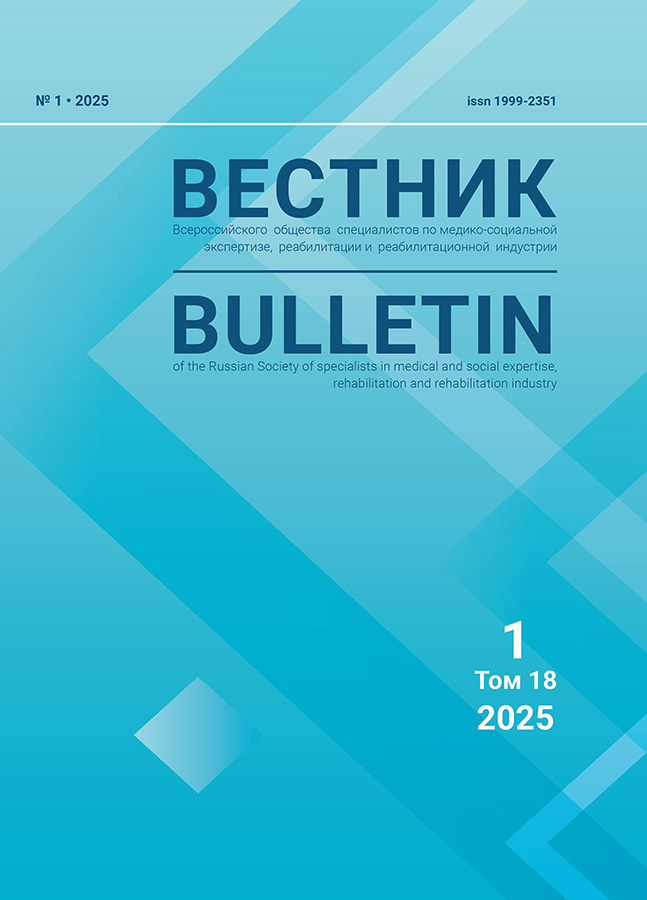Lesions of the aortic valve of the heart in elderly patients (review)
- 作者: Gulua I.G.1,2, Bogova O.T.1, Shurgaya M.A.1, Chandirli S.A.1, Chilikina N.V.2, Uryadnova M.N.2
-
隶属关系:
- Russian medical Academy of continuing professional education of Minzdrav of Russia
- GBUZ KDC No. 6, Moscow Branch No. 3
- 期: 卷 18, 编号 1 (2025)
- 页面: 107-120
- 栏目: Lecture, revrew
- ##submission.dateSubmitted##: 15.09.2025
- URL: https://jdigitaldiagnostics.com/1999-2351/article/view/690387
- DOI: https://doi.org/10.63839/19992351-11
- ID: 690387
如何引用文章
详细
The article provides a review of the literature on aortic valve damage in elderly patients. Patients with heart valve defects are a large group of patients, mainly the elderly and senile, in whom the development of heart failure is most predictable. Sudden death in patients with valvular pathology is quite common, even in the absence of additional risk factors, so all these patients have a high risk of death, especially with prolonged conservative treatment.
全文:
作者简介
Inga Gulua
Russian medical Academy of continuing professional education of Minzdrav of Russia; GBUZ KDC No. 6, Moscow Branch No. 3
Email: bogova.olga@yandex.ru
candidate of the Department of Geriatrics and Medical and Social Expertise of the of the Federal State Budgetary Educational Institution of the Russian Ministry of Health, a doctor of ultrasound diagnostics
俄罗斯联邦, Moscow; MoscowOlga Bogova
Russian medical Academy of continuing professional education of Minzdrav of Russia
Email: bogova.olga@yandex.ru
Doctor of Medical Sciences, Professor of the Department of Geriatrics and Medical and Social Expertise
俄罗斯联邦, MoscowMarina Shurgaya
Russian medical Academy of continuing professional education of Minzdrav of Russia
Email: bogova.olga@yandex.ru
Doctor of Medical Sciences, Professor of the Department of Geriatrics and Medical and Social Expertise
俄罗斯联邦, MoscowSevda Chandirli
Russian medical Academy of continuing professional education of Minzdrav of Russia
Email: cha-seva2@yandex.ru
ORCID iD: 0000-0002-1869-0869
Dr. med. Sciences, Associate Professor Department of Geriatrics and Medical and Social Expertise
俄罗斯联邦, MoscowNatalia Chilikina
GBUZ KDC No. 6, Moscow Branch No. 3
Email: bogova.olga@yandex.ru
Head of the Department of Functional Diagnostics
俄罗斯联邦, MoscowMarina Uryadnova
GBUZ KDC No. 6, Moscow Branch No. 3
编辑信件的主要联系方式.
Email: bogova.olga@yandex.ru
Head of the Department of Radiation Diagnostics
俄罗斯联邦, Moscow参考
- Aortic stenosis [Electronic resource]: clinical recommendations, 2016: Access mode: https://racvs.ru/clinic/files/2016/Aortic - stenosis.pdf
- Aortic regurgitation [Electronic resource]: clinical recommendations 2016: Access mode: https://racvs.ru/clinic/files/2016/Aortic - regurg.pdf
- Cardiology: national guidelines; ed. by Yu.N. Belenkov, R.G. Oganov. Moscow: GEOTAR-Media, 2011. 1232 p.: ill.
- Clinical recommendations – Congenital valvular aortic stenosis – 2022-2023-2024 (10.10.2023) – Approved by the Ministry of Health of the Russian Federation Access mode: http://disuria.ru/_ld/13/1386_kr22Q23p0MZ.pdf?ysclid=m5126cxuto871931741
- National clinical guidelines for the management, diagnosis and treatment of valvular heart defects, 2009 [Electronic resource]: Access mode: https://racvs.ru/custom/files/clinic/valve2009.pdf
- ESC/EACTS 2017 recommendations for the treatment of valvular heart disease. [Electronic resource]: Access mode: https://scardio.ru/content/Guidelines/valves_7_rkj_2018.pdf?ysclid=m5123u
- Novikov, V.I. Valvular heart defects / V.I. Novikov, T.N. Novikova. Moscow: MEDpress-inform, 2017. 144 p.
- Camm J. Heart and vascular diseases: guidelines of the European Society of Cardiology / J. Camm, T. Lusher, P. Serrouis. – M. : GEOTAR-Media, 2011. – 1480.
- Nkomo VT, Gardin JM, Skelton TN, Gottdiener JS, Scott CG, Enriquez-Sarano M.Burden of valvular heart diseases: a population-based study. Lancet 2006;368:1005-11
- Eveborn G.W., Schirmer H., Heggelund G. et al. The evolving epidemiology of valvular aortic stenosis. the Tromsø study // Heart. 2013.Vol. 99. P.396–400.
补充文件















